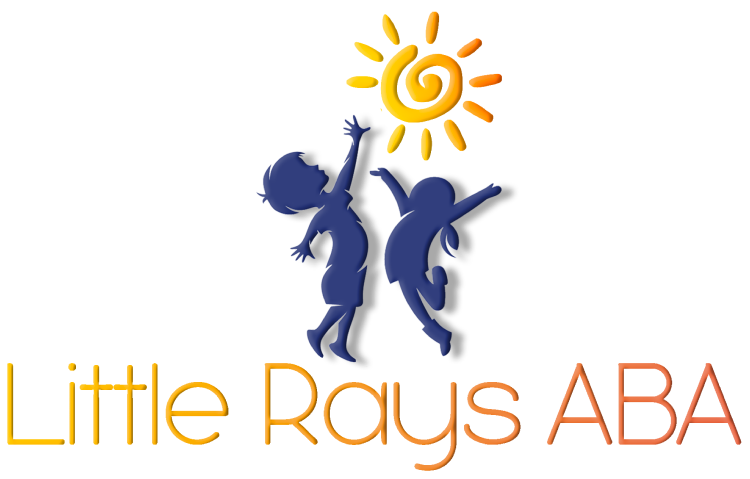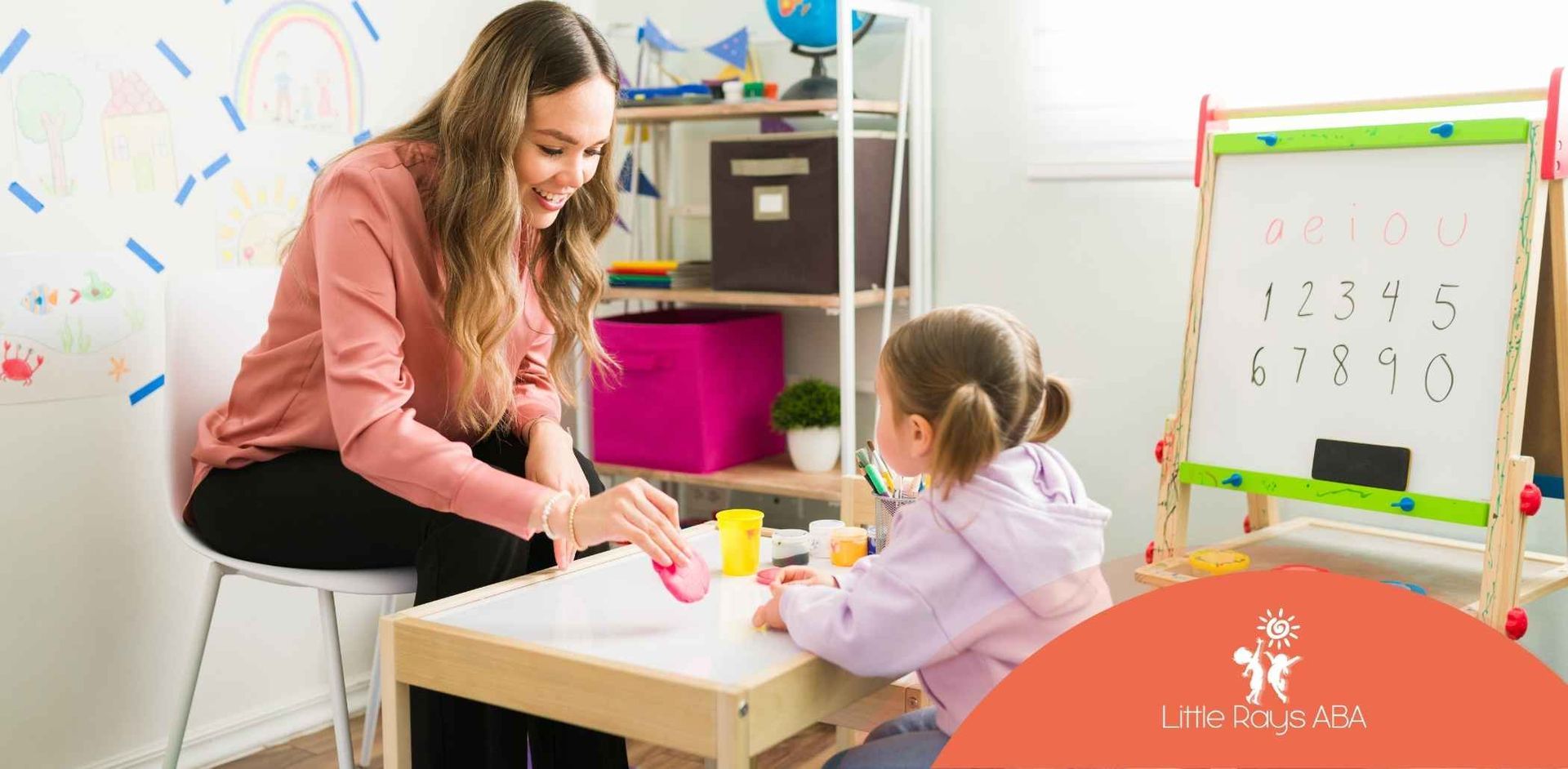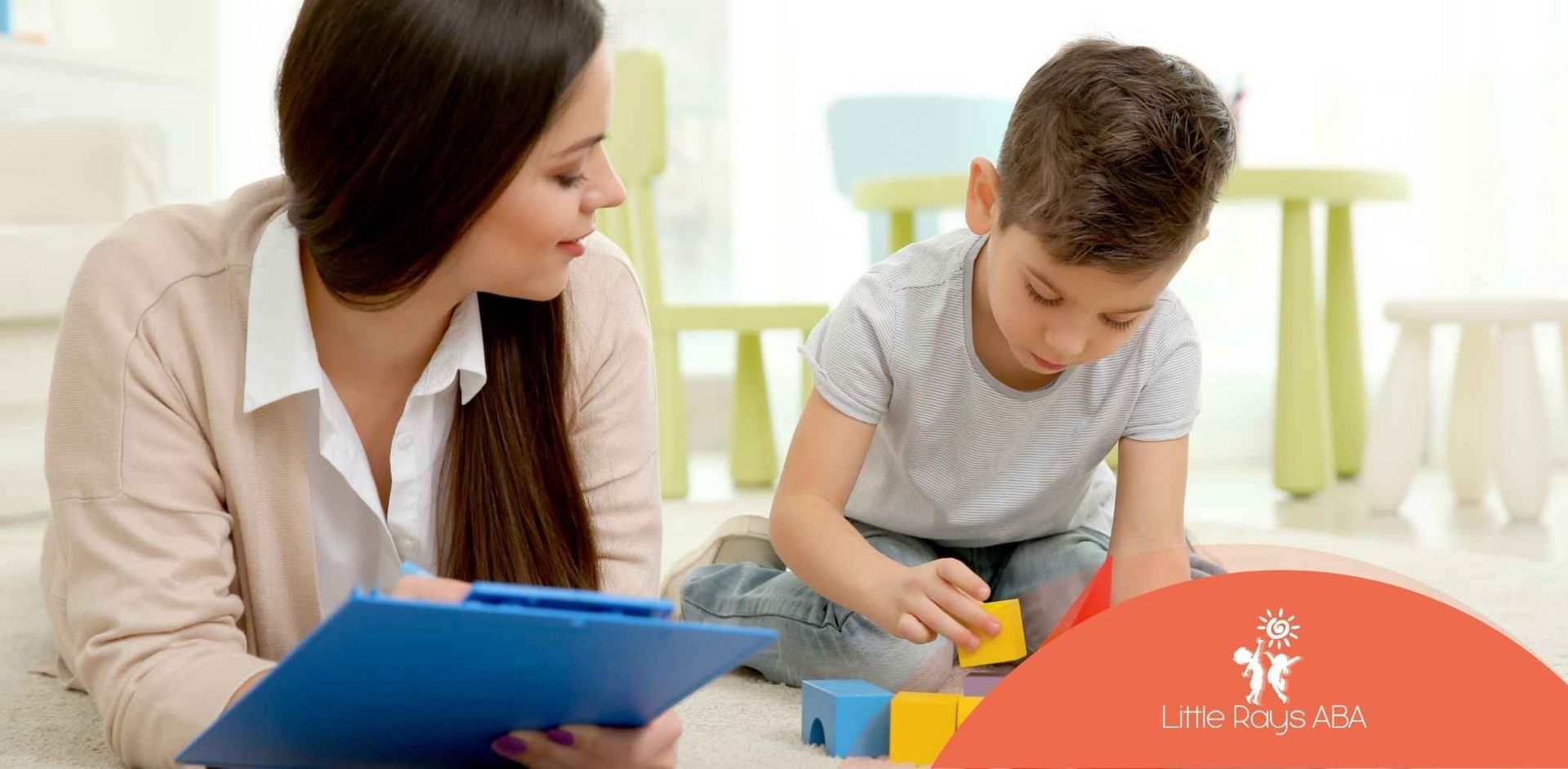
When Should I Quit ABA? Key Indicators for Parents
For parents of children on the autism spectrum, starting ABA therapy is an important decision, but knowing when to transition away from it is just as critical. This choice is deeply personal and depends on your child's unique journey and whether their therapy goals have been met. As your child grows and develops new skills, their needs will change. This guide will walk you through the key signs and considerations to help you determine if it's the right time to stop or modify your child's ABA program.
Understanding ABA Therapy and Its Purpose
Applied Behavior Analysis (ABA) therapy is a scientifically validated approach used to help children with autism spectrum disorder. It focuses on understanding behavior and applying interventions to improve socially significant behaviors. The core of ABA therapy is to teach valuable life skills and reduce challenging behaviors.
This therapy is vital because it offers personalized support tailored to a child’s needs. By using techniques like positive reinforcement, ABA helps children improve communication, social abilities, and daily living skills. It provides a structured path for them to succeed in various aspects of life.
Core Principles of ABA Therapy
The foundation of Applied Behavior Analysis rests on the science of learning and behavior. The primary goal is to understand how behaviors are learned and how they are affected by the environment. Through careful observation and data collection, therapists can identify the functions of specific behaviors.
A key technique in this therapy is positive reinforcement. This principle involves rewarding desired behaviors to increase the likelihood they will happen again. For instance, if a child uses a word to ask for a toy, they are immediately given the toy, reinforcing that form of communication. This makes learning a positive and motivating experience.
A Board Certified Behavior Analyst (BCBA) oversees the process. These professionals conduct detailed assessments, design individualized treatment plans, and supervise the therapy team. Their expertise in behavior analysis ensures the program is effective, ethical, and tailored to your child's unique needs and goals.
ABA’s Role in Supporting Children with Autism
ABA therapy offers critical support for autistic children by providing structured and individualized interventions. It breaks down complex tasks, such as getting dressed or having a conversation, into small, manageable steps. This method helps children learn and master new skills without feeling overwhelmed. The ultimate aim is to help them achieve their therapy goals and gain independence.
One of the most significant benefits of ABA is its focus on improving social skills. Therapists create opportunities for children to practice interacting with others, learning to share, take turns, and understand social cues. This focused practice can lead to meaningful positive changes in how a child engages with peers and family members.
Furthermore, ABA equips parents and caregivers with effective strategies to manage challenging behaviors at home. This collaborative approach extends the benefits of therapy beyond the clinic, creating a consistent and supportive environment that fosters long-term growth and development.
What to Expect from a Typical ABA Program
A typical ABA program begins with a thorough assessment conducted by your child’s BCBA. This evaluation helps identify your child's strengths and areas needing support, which forms the basis of a personalized treatment plan. This plan outlines specific, measurable goals for your child to work on.
ABA therapy sessions are structured yet flexible, designed to be engaging and positive. The number of therapy hours can vary widely, often ranging from 10 to 40 hours per week, depending on the child's needs. During sessions, therapists use a variety of techniques, including discrete trial training and natural environment teaching, to work on skills outlined in the plan.
Involvement from family members is a crucial component of a successful program. Parents are often trained to use ABA principles in daily life to reinforce what their child learns in therapy. This teamwork ensures consistency and helps the child generalize their new skills to different settings.
Measuring Progress in ABA
To effectively measure your child’s progress in ABA, it is essential to establish clear goals from the very beginning. Progress is not just about the time spent in therapy but about achieving tangible outcomes. Consistent monitoring and data collection are at the heart of this process.
Through systematic behavior analysis, therapists track improvements in specific skills and behaviors. This focus on ongoing progress helps you and your therapy team see what is working and what might need to be adjusted. The following sections will explain how to recognize milestones, identify plateaus, and track changes over time.
Recognizing Milestones and Growth
A key indicator of successful ABA therapy is observing tangible growth in your child’s development. This includes the acquisition of new skills that help them navigate their world more independently. You should see progress in areas that were initially identified as challenges.
Look for specific milestones that demonstrate improvement. These positive behaviors show that the therapy is effective and that your child is learning and applying new strategies. Key areas of growth often include:
- Improved communication skills: Using words or other methods to express wants and needs.
- Better social interactions: Showing interest in peers, sharing, and engaging in back-and-forth play.
- Increased independence: Completing self-care tasks like dressing or brushing teeth with less help.
Recognizing these advancements is motivating for both you and your child. It confirms that the therapy is making a real difference in their daily life and helps you celebrate their achievements along the way.
Identifying When Progress Plateaus
Sometimes, a child may experience a plateau, where their progress slows down or stops despite consistent ABA therapy hours. If you notice that your child has not been learning new skills or reducing challenging behaviors for a significant period, it may be a sign that the current approach is no longer effective.
When this happens, it is important to have an open conversation with your child's therapy team. A lack of ongoing progress does not necessarily mean it is time to quit, but it does signal a need for reevaluation. The team can help determine if the realistic goals set initially are still appropriate or if they need to be adjusted.
This reevaluation might involve changing the intervention strategies, modifying the therapy schedule, or even exploring different therapeutic approaches. The goal is to ensure that your child continues to be challenged and supported in a way that promotes growth.
Tracking Consistency and Change Over Time
Consistent progress tracking is fundamental to the ABA therapy process. It allows you and your therapy team to see clear, objective evidence of change. This tracking should not be limited to therapy sessions; it is also valuable to monitor how skills are used in daily activities at home and in the community.
You can use simple tools like journals or charts to note observations. This information provides your therapist with important insights into how your child is generalizing skills to different environments. It also helps tailor the therapy to your child's specific needs as they evolve.
A tracking table can be a helpful tool for parents. It offers a structured way to monitor skills and see patterns over time.
| Skill/Behavior | Baseline (Before Intervention) | Current Status | Notes |
|---|---|---|---|
| Requesting a snack | Points or cries | Uses the word "snack" 3 out of 5 times | Most successful when given a choice |
| Greeting a visitor | No response | Waves or says "hi" 50% of the time | Needs a verbal prompt to initiate |
| Sharing a toy | Refuses to share | Shares with a sibling for 1 minute | Still struggles when the toy is a favorite |
Emotional and Behavioral Signs It May Be Time to Quit
Beyond tracking skills, it is crucial to pay attention to emotional signs and behavioral changes in your child. While ABA therapy is designed to be positive, some children may experience stress or resistance. Your child’s mental health and well-being should always be the top priority.
If you observe a consistent increase in anxiety, unhappiness, or negative behaviors related to therapy sessions, it may indicate that the current plan is not meeting your child’s needs. These signs are important signals that it may be time to reassess the approach, as we will explore next.
Child’s Stress, Anxiety, or Resistance During Sessions
It is important to monitor your child for signs of stress or anxiety related to their therapy. While some challenges are expected during learning, persistent negative emotions are a red flag. You might notice your child becomes withdrawn, cries, or actively tries to avoid ABA therapy sessions.
These behaviors can be subtle, such as a change in mood before therapy or increased irritability afterward. Paying close attention to these patterns is essential for protecting your child’s mental health. Your observations are valuable because you know your child best.
If you spot these signs, communicate them to your child's BCBA immediately. A good therapy team will take your concerns seriously and work with you to understand the cause. They may need to adjust the pace, change the activities, or modify the environment to ensure therapy remains a positive and supportive experience, not a source of distress.
Negative Behavioral Changes Related to ABA
While ABA therapy aims to reduce challenging behaviors, in some cases, it can inadvertently lead to new negative behaviors. If you notice an increase in tantrums, aggression, or emotional outbursts that seem connected to therapy, it is a serious concern that needs to be addressed.
These behavioral changes could signal that the demands of the therapy are too high or that the methods used are not a good fit for your child. It is crucial to distinguish between a temporary difficulty with a new skill and a persistent pattern of negative reactions. A child's mental health should never be compromised for the sake of therapeutic goals.
Bring these concerns to your ABA therapist and BCBA right away. An open dialogue can help determine the root cause. It may be necessary to change the intervention strategies or even reconsider if ABA is the right approach for your child at this time.
Lack of Engagement or Enjoyment in Activities
A child’s engagement and enjoyment are vital for effective learning. While therapy involves hard work, it should not feel like a constant struggle. If your child consistently shows a lack of interest or happiness during sessions, it can hinder their progress.
Observe how your child participates in therapy activities. A lack of enjoyment is an important signal. Signs of poor engagement include:
- Frequently trying to leave the therapy area.
- Appearing listless or unhappy during activities.
- Showing little to no curiosity or enthusiasm.
A supportive environment where a child feels happy and motivated is key to success. When family members and therapists work together to make learning fun, the skills are more likely to stick and be used in daily life. If enjoyment is missing, it's time to rethink the approach.
Reevaluating Therapy Goals and Outcomes
As your child grows, their specific needs and priorities will shift. The therapy goals that were relevant a year ago may no longer be the most important ones today. To achieve the best results, it is essential to reevaluate the therapy plan periodically.
This process involves looking at what has been accomplished and identifying any new challenges that have emerged. By setting new, realistic goals, you ensure that the therapy remains focused and effective. The following sections will guide you on how to align these goals with your family's priorities and review progress with your team.
Aligning ABA Goals with Family Priorities
For therapy to be truly effective, its goals must be meaningful to your child and your family. The therapy goals should focus on important life skills that will improve your child's independence and participation in daily activities. What matters most to you? Is it communication, self-care, or safety skills?
Involve all key family members in the goal-setting process. Your insights into your child's daily life are invaluable. When the entire family is on board with the goals, you are more likely to reinforce them consistently at home, which accelerates progress.
Communicate your priorities to the therapy team. A collaborative approach ensures that the treatment plan is not just clinically sound but also practical and relevant to your family's life. This alignment makes the therapeutic journey more purposeful and effective for everyone involved.
Reviewing Progress with Your Therapy Team
Regular reviews with your therapy team are essential for tracking progress and making informed decisions. Maintaining open communication with your child’s BCBA and therapists ensures that everyone is aligned and working toward the same goals. These meetings provide a dedicated time to discuss successes and challenges.
This ongoing support is a cornerstone of effective ABA therapy. You should feel comfortable asking questions and sharing your observations from home. A Certified Behavior Analyst can use this feedback to make necessary adjustments to the therapy plan.
How often you meet can vary, but regular check-ins are crucial. Plan to have formal reviews to discuss:
- Data on your child's progress toward specific goals.
- Any new behaviors or concerns you have observed.
- Strategies for generalizing skills to home and community settings.
Comparing Achieved Outcomes with Initial Expectations
It is helpful to periodically step back and compare your child's achieved outcomes with your initial expectations. When you started ABA, what were the primary goals you hoped to accomplish? Reflecting on this can provide important insights into the effectiveness of the therapy.
Consider how far your child has come. Have they met or exceeded the original goals? Perhaps the progress has been in different areas than you anticipated. This comparison is not about judgment but about understanding the journey and the impact of the therapy.
If there is a significant gap between expectations and outcomes, it is a sign that a change may be needed. This does not mean the therapy has failed. Instead, it is an opportunity to discuss the ongoing progress with your team and reset goals to better align with your child's current needs and potential.
Exploring Alternatives and Next Steps
Deciding to reduce or stop ABA therapy does not mean ending all support. Instead, it is about finding the right next steps for your child's continued growth. This often involves exploring alternative therapies and creating a thoughtful transition plan.
The goal is to build on the skills your child has already learned and provide ongoing support in new ways. This might involve moving to a consultation model, where a BCBA checks in periodically, or integrating other therapeutic services. Let's look at what these alternatives and plans might entail.
Considering Other Therapies and Interventions
As your child's needs evolve, other therapies may become more beneficial. These interventions can work alongside a reduced ABA schedule or serve as the primary support after transitioning away from intensive therapy. They offer focused help in specific areas of development.
Creating a supportive environment often involves a team of specialists. Depending on your child's needs, you might consider:
- Speech therapy: To improve verbal and non-verbal communication.
- Occupational therapy: To develop fine motor, sensory processing, and daily living skills.
- Physical therapy: To enhance gross motor skills, coordination, and balance.
- Social skills groups: To provide structured opportunities for peer interaction.
These therapies can address needs that ABA may not target as directly. Working with your child's doctors and therapists can help you create a comprehensive plan that supports their overall development and well-being.
Building an Exit and Transition Plan
A well-structured transition plan is essential for a smooth transition away from intensive ABA therapy. Abruptly stopping services can lead to a loss of skills. This plan, often called a discharge plan, should be developed collaboratively with your child's BCBA.
The plan should outline a gradual reduction in therapy hours. This tapering process allows your child, your family, and the school team to adjust to the changes. It also involves systematically transferring the responsibility of implementing strategies from the therapist to parents and teachers.
Determining the best time to start this process depends on your child's readiness and stability. A carefully managed exit ensures that the progress made is maintained and provides a clear path forward for continued growth and independence.
Integrating New Strategies Into Daily Routine
Transitioning from intensive therapy means integrating new strategies and reinforcing important skills into your child's daily routine. The consistency you create at home is vital for maintaining progress. You can adapt activities and use tools like visual schedules to support the skills learned in therapy.
Create opportunities for your child to practice what they have learned in real-life situations. This could mean setting up playdates to work on social skills or involving them in household chores to build independence. These experiences help your child generalize their abilities beyond a therapeutic setting.
By embedding these strategies into your daily life, you create a supportive environment where your child can continue to thrive. This proactive approach helps solidify their skills and builds their confidence as they face new challenges.
Conclusion
Deciding when to quit ABA therapy can be a complex and emotional journey for parents. By closely monitoring your child's progress and emotional state, you can make informed decisions that align with their unique needs. Recognizing signs of stress, anxiety, or disengagement during sessions is crucial, as is reassessing therapy goals periodically to ensure they resonate with your family's priorities. Exploring alternatives and creating a transition plan will help facilitate a smooth exit from ABA if that becomes necessary. Remember, every child is different, and prioritizing their well-being should always come first. If you have further questions or need personalized advice, don’t hesitate to reach out to your therapy team for support.
At Little Rays ABA, we understand that the goal of therapy isn't endless sessions, but a clear path to independence. As Florida's premier ABA provider, our ethical and transparent approach ensures you're always part of the journey. We are committed to a collaborative process where progress is data-driven, goals are met, and we empower your child and family with the skills needed to thrive. Our mission is to guide your child to a place where they no longer need us, helping them take their own "little rays" of progress toward a brighter, more independent future.
Frequently Asked Questions
What are signs that ABA therapy is no longer helpful for my child?
Signs that ABA therapy may no longer be helpful include a lack of progress, the emergence of negative behaviors, or increased stress during therapy sessions. If the treatment plan no longer meets your child’s needs or they have achieved their goals, it is time to reevaluate.
Will quitting ABA cause my child to lose progress or regress?
Quitting ABA therapy abruptly can risk a loss of the child’s progress. However, a gradual transition plan with ongoing support from family and other professionals helps maintain skills and ensures the positive changes are lasting.
What alternatives are available after stopping ABA therapy?
Many alternative therapies can provide additional support after ABA. These include speech therapy, occupational therapy, and social skills groups. These services can be tailored to your child’s new goals and evolving needs.
Sources:
- https://my.clevelandclinic.org/health/treatments/25197-applied-behavior-analysis
- https://childmind.org/article/controversy-around-applied-behavior-analysis/
- https://www.ncbi.nlm.nih.gov/pmc/articles/PMC9458805/
- https://www.autismspeaks.org/applied-behavior-analysis
- https://www.nhs.uk/conditions/autism/signs/children/#:~:text=Autism%20in%20young%20children&text=not%20smiling%20when%20you%20smile,as%20much%20as%20other%20children
- https://www.autismparentingmagazine.com/aba-principles/
- https://www.bacb.com/bcba/
- https://moveupaba.com/blog/how-do-i-know-if-aba-therapy-is-working/
- https://moveupaba.com/blog/when-should-i-quit-aba/
Related Posts





